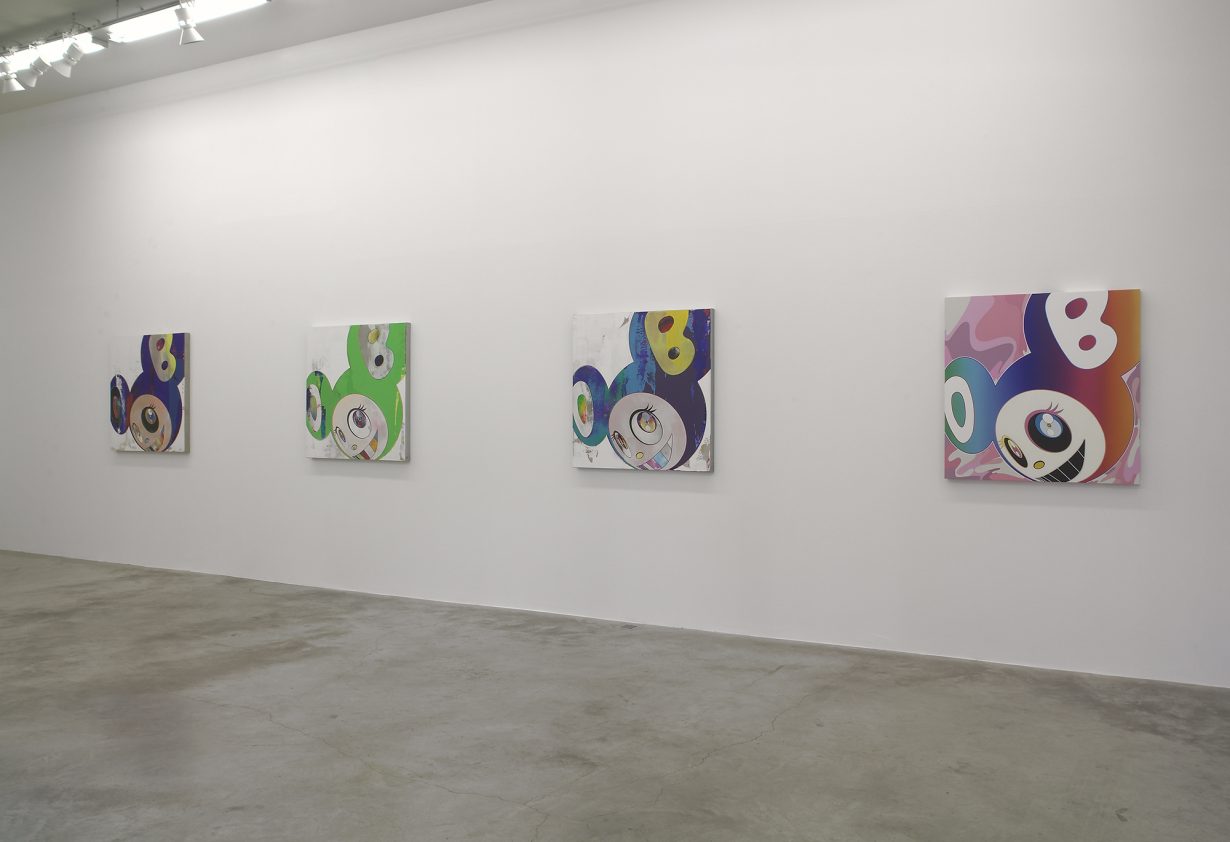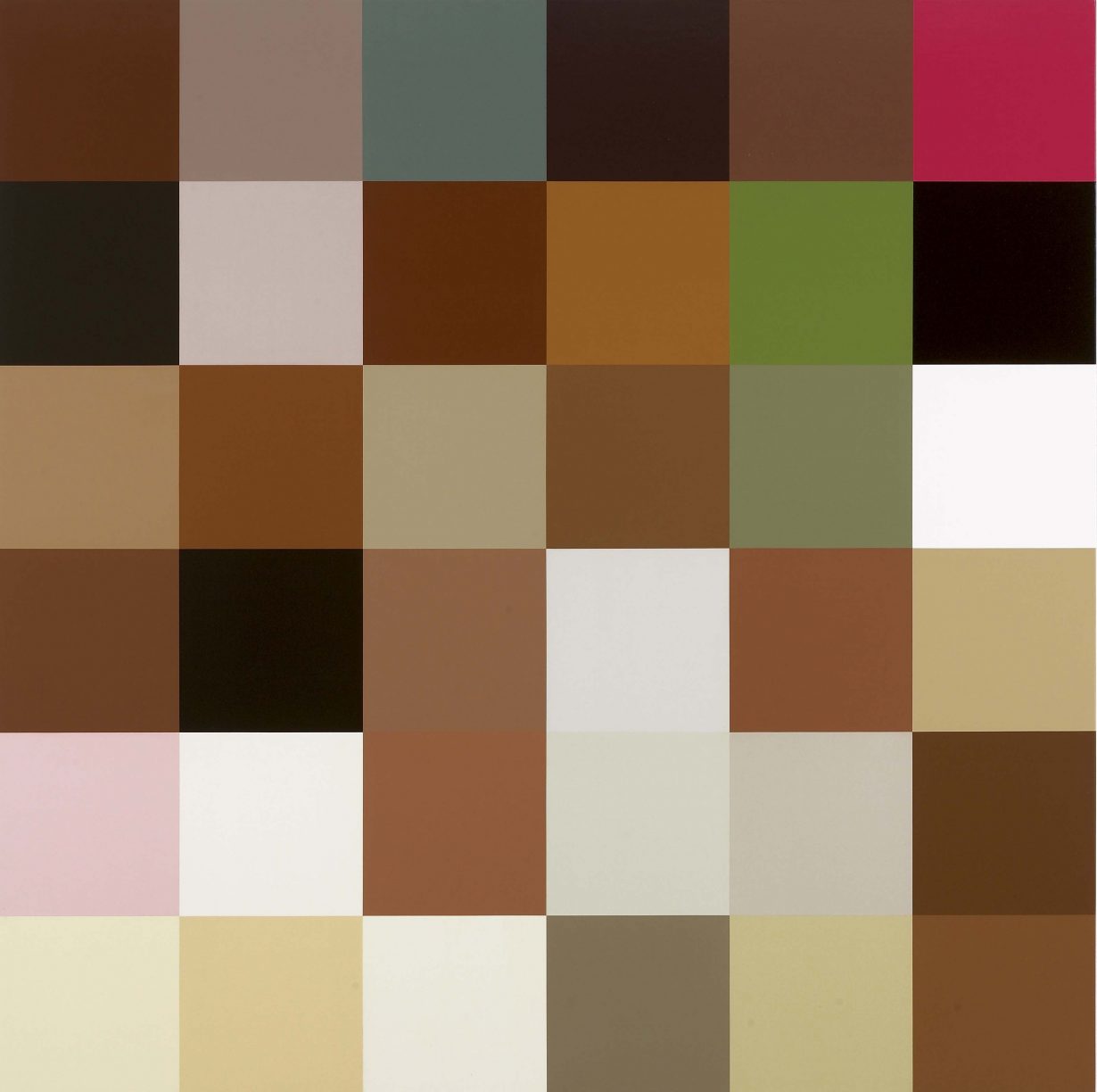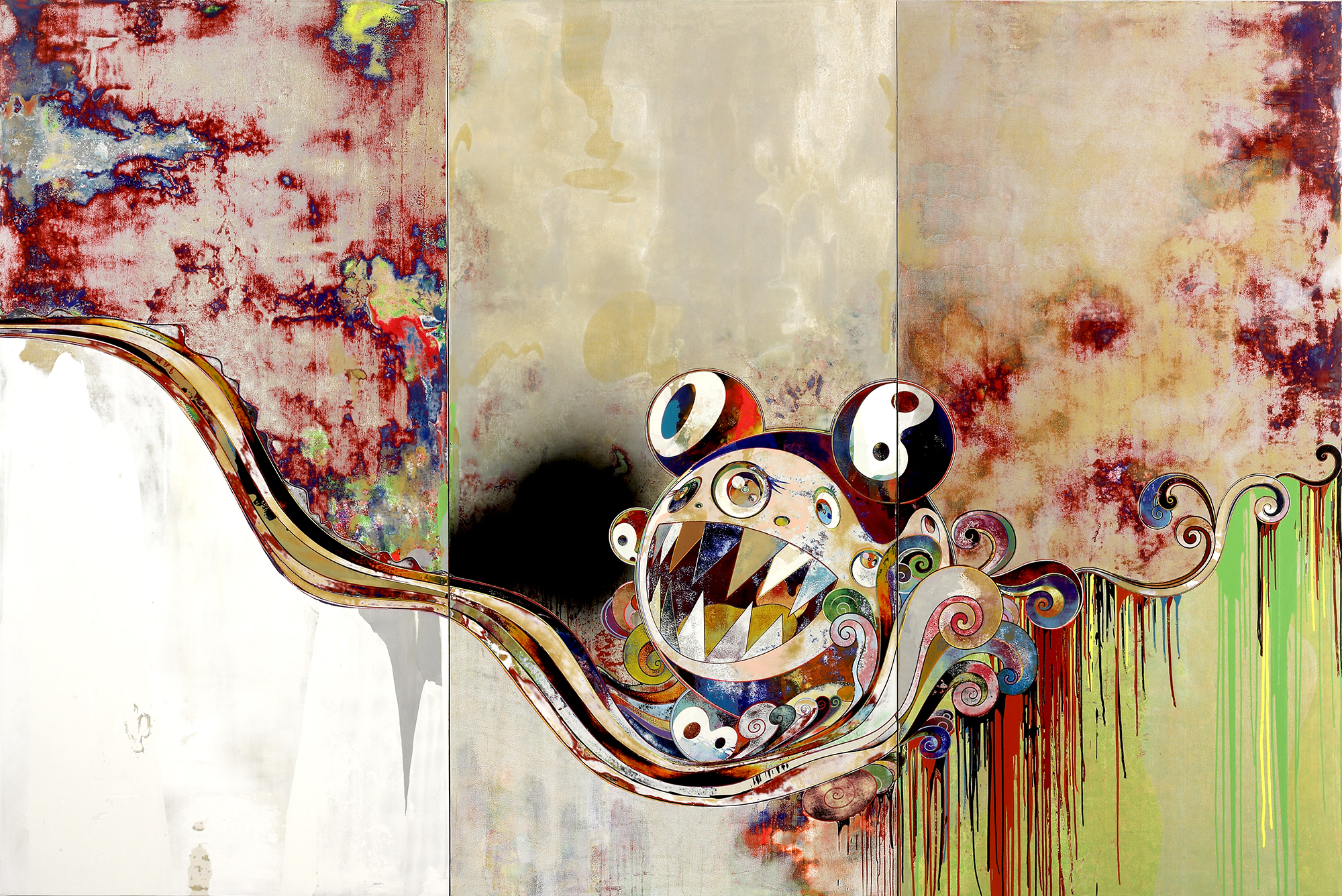From 2007: J.J. Charlesworth probes Murakami’s attitude to making culture, both inside and outside the artworld
In a vast convention hall in the harbour area of Tokyo, an art fair is going on. ‘Fair’ is a better word to use than usual; for all the breathless talk about the boom in international art fairs, and all the champagne and spectacle, they remain straight, ultra-serious, power-driven spaces where prestige, reputation and money merge. Here, instead, there is cheerful pop music chirped by an enthusiastic, pretty pop star in schoolgirl outfit and cute glasses, the noise booming out over the heads of her jumpin’ fans, and over the narrow rows of hundreds of little booths; here the ambitions and fantasies of young, unknown artists are on vivid display, sometimes startling, sometimes awkward; here it’s often hard to distinguish an ‘artwork’ from a pop-culture trinket; here the art fair – the most vivid visual expression of that less visible machine, the art market – seems to be metamorphosing into something more energetic, humble, easy-going and open – an indoor street market for the selling of some stuff called art. And above the central stage, on a big screen, a graphic of a bizarre ‘g’, its top and tail each hosting a boggling, staring, blinking eye. ‘G’ for GEISAI: ‘art fair’.
GEISAI is one of the more remarkable recent activities of the Japanese artist Takashi Murakami, in what is quickly becoming something of a crusade to single-handedly transform how contemporary art is perceived in Japan, while simultaneously extending the fortunes of younger Japanese artists abroad, through his multidisciplinary company Kaikai Kiki Co. Kaikai Kiki’s range of activity is impressive; producing Murakami’s high-finish artworks, organising GEISAI every six months since 2002, managing the careers of artist protégés such as Chiho Aoshima, Chinatsu Ban and Mr, handling the production of the growing line of Murakami merchandising and now branching out into video animation to produce a feature-length anime that will appear in a major show at MoCA in Los Angeles in October, and which Murakami hopes to target at mainstream distribution.
Murakami is therefore something of a phenomenon, and a curiosity; an art star whose work commands respect and high prices in the West, the maverick curator of a trilogy of shows of contemporary Japanese art and culture, most recently the remarkable Little Boy in New York in 2005, a showman, a businessman, a cultural pundit and institutional entrepreneur, a figure who alters his production to operate within the circuits of Japanese popular culture at home, while alchemically transforming it into the commodity of contemporary art abroad, a public figure who is regularly critical of the artworld’s institutions in Japan, yet, with shows like Little Boy, also articulates a critical approach to the West’s influence on the culture of postwar Japan. Catching up with him at his show at Emmanuel Perrotin in Paris, a few weeks after visiting GEISAI, I was struck by how Murakami’s operations work hard to circumvent the usual separations between areas of cultural production, to create a win-win situation for the artist and for artists who might follow his example.

The art market, for Murakami, seems to be only one facet of a bigger project, which not only cuts across cultural boundaries between Japan and the West, but more importantly across the well-established distinction (in Western artthinking at least) of art as a space that has some cultural independence or distance from the vices of mass culture, where mass culture is a regulated and oppressive space in which cultural norms are reinforced, not challenged. Murakami’s operations slip between these; in among the goody-bag gifts from Kaikai Kiki’s PR department in Tokyo was a throw cushion in the shape of Murakami’s standard smiling flower: cute, endlessly happy and inexpensive. At Emmanuel Perrotin, small circular paintings sport exactly the same Rainbow Flower, in bright colours on a silvered ground: cute, endlessly happy and unaffordable. And at least you could sit on the cushion.
So what does this suggest about Murakami’s attitude to making culture, both inside and outside the artworld? That one could operate differently in and with the artworld, Murakami says, is something he learned during the 1990s, when he realised what Damien Hirst and the Freeze generation were doing. Hirst’s approach both to mass media and to colonising the art market with a particular brand of the artist’s image certainly kicked art and popular culture back into sharing the same space. But if the young British artists used bombast, shock and confrontation to make their mark, Murakami’s visual universe, and its effect on its audience, are far removed from that attitude (even if, in earlier sculptures, his work flirted with the erotic-pornographic edge of manga culture). Yet while the YBAs used that confrontation to make themselves publicly visible, they nevertheless maintained an oldfashioned attitude to their elite status as exclusive producers for the art market: Hirst may have a similar-sized artist-as-businessman operation, but his output is largely confined to the traditional model of artist, artwork and dealer. Murakami jokingly declares that he is a little jealous of such easy arrangements, which are hardly available to artists in Japan; it’s that absence, he says, that has spurred him on to develop new ways of working commercially.
Murakami is preoccupied with thinking of art as a form of entertainment, and as such, he can see the value of expanding that communication to the widest audience. But talking to him, it’s clear also that this is in direct counterpoint to his concerns about how survival and success are defined by the limits of the institutions and systems one has to work in. One theme of his work, he suggests, is “finding out how to survive in the art market, how to understand how it functions”. Surprisingly for an artist who many would point to as the paragon of entrepreneurial success, Murakami keeps a wary eye on the volatility of the art market, and suggests that it’s worth thinking about what would happen if there were another art market crash. The prices of his works, he says, are unnaturally high – not quite right. On his visit to Art Basel this year, it seemed to him that the art market was exploding. But he laughs when I suggest that, in business, what he is doing would be called diversification or risk management.

Perhaps Murakami should be less worried about art market crashes. The recessions that precipitated the last big crash are nowhere on the horizon, and the growth of the artworld is due to a broadening base of collectors and institutions, who plug more substantially into the economy than the narrow art-market aristocracies of a generation ago. But it’s perhaps a normal sentiment for an artist who experienced the constraints of the artworld in Japan during the 1990s, who went abroad to find recognition and is now eager to try to force Japan to acknowledge contemporary art as a mainstream cultural concern. In a culture where artistic recognition is reserved for those working in manga, animation or video games, GEISAI is about creating a context for a culture to emerge among, and for, young artists, so that they can work successfully in the contemporary artworld.
GEISAI, with its youth-streetmarket atmosphere on the one hand and its judging panel of art and media creatives on the other, fuses the forms of tradition and hierarchy with the free-flowing energies of subculture – a mix of innovation and conservatism that directly reflects the free-market survivalism of life in Japan: Murakami sees an opportunity for artists to flourish within the system only by encouraging the system to grow, and it is in this sense that he talks about developing the possibility for artists to express a sense of their own freedom. This again partly reflects the very different terms through which individual freedom is experienced in a society like Japan, but it is one that is becoming more common across the Western artworld too: art as a critical alternative, a challenge to conservative culture, and for so long the main selfjustification for ‘avant-garde’ art in the West, is disappearing as the art market increasingly dominates artists’ definition of success. A new generation of artists coming out of art schools everywhere are looking for financial freedom before critical freedom.
Murakami’s art operations are in a sense the exemplar of a pragmatic approach that realises that there is no critical ‘outside’ or margin to contemporary culture from which to ‘look in’; there are only seams or lines of demarcation from one cultural market to another to work within or travel through, with their own opportunities and compromises. In this kind of cultural space, it is diffi cult to do anything but please, and yet for all his audacious vocabulary of business models and art market strategies, Murakami’s work itself still creates tension, however pleasing the surface, more so than many other artists who pretend to veil a critical subtext beneath a market-friendly exterior. There is always something not quite right about the infinitely welcoming smiles of his flowers, and a schizophrenic intensity to the wild, melting, mutating grin of Mr DOB in his recent incarnations. Melting and mutating, shifting from one space to another while avoiding the cultural politics of confronting the viewer with the unpleasant and the negative, are central to Murakami’s expanded strategies of production and proliferation. Yet unlike his younger acolytes, who present more introspective, biographical or fantasist preoccupations, Murakami’s creatures and characters are more often than not directing their attention at you – the public – staring at you, grinning at you, paradoxically ‘looking in’ from ‘outside’, offering you the childish fantasy of a welcoming otherness to the world you’re in, and of the possibility of dissolving into some new shape, some new place. Neither cynical nor critical, Murakami’s work weirdly presages the current situation of art, in which ideas of artistic freedom, critical distance, the market, art’s institutions and art’s public are mutating into something new, uncertain and brightly, smilingly dark.
From the January 2007 issue of ArtReview – explore the archive.
